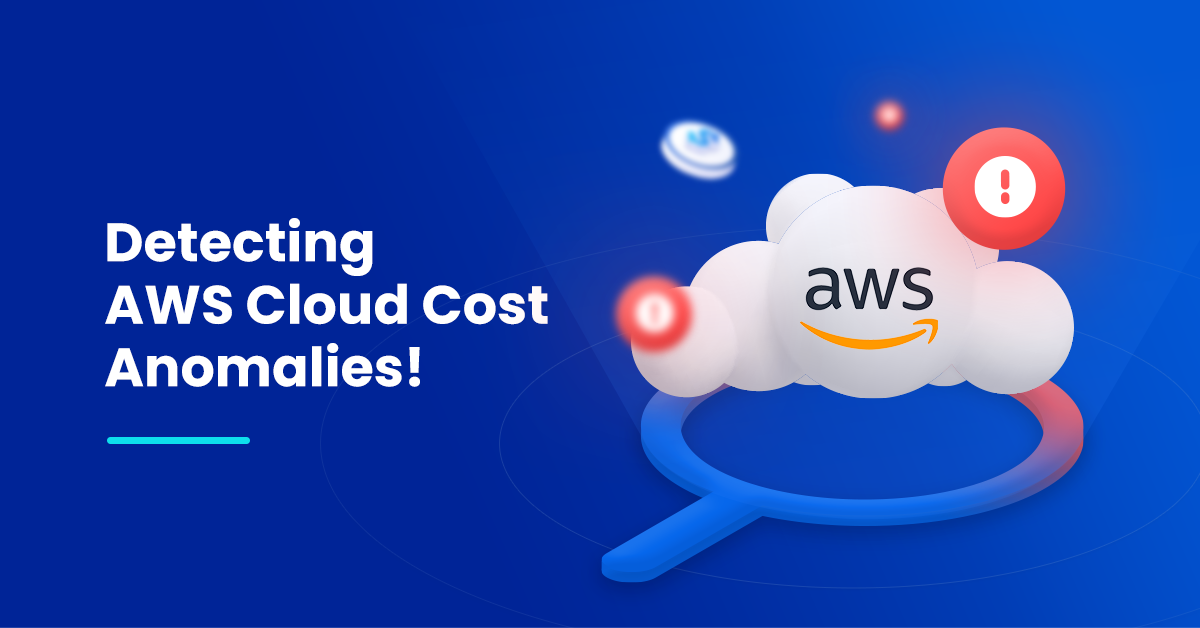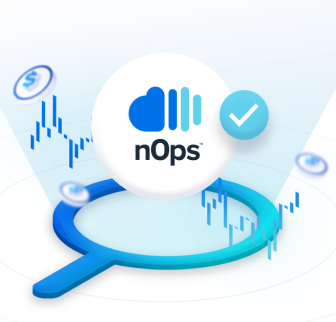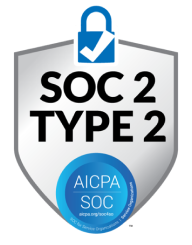In the current challenging business environment, organizations are experiencing disruption in their operations, budget constraints, and decreased revenue. As a result, many customers are turning to cloud cost optimization to avoid unexpected surges in their AWS service bills. As a solution, detecting AWS Cloud Cost Anomalies helps eliminate idle resources.
Cost Anomaly detection refers to identifying unusual spikes or fluctuations in the cost of using AWS cloud services. This process uses machine learning algorithms to analyze data and detect billing anomalies by comparing current usage with historical usage patterns. These anomalies may arise from factors such as unoptimized resources, human errors, and security breaches. By detecting these anomalies, organizations can take prompt action to optimize their AWS cloud usage, avoid unexpected costs, and improve cost efficiency.
In this blog, we’ll break down how to understand how to detect and mitigate AWS Cost Anomalies. This blog will also cover top AWS cost optimization best practices to help you optimize and save.
How to Detect and Mitigate AWS Cost Anomalies?
To detect and mitigate AWS cost anomalies, you can follow these steps:
- Set up AWS cost and usage reports: Configure AWS Cost and Usage Reports to generate detailed billing reports for your AWS accounts. These reports contain information about your AWS resource usage and cost.
- Define standard usage patterns: Establish baseline usage patterns for your AWS resources, including the number of instances, CPU usage, and data transfer. This can be done using AWS tools like CloudWatch, Trusted Advisor, or third-party tools like nOps cloud management.
- Analyze cost data: Analyze your cost and usage data using machine learning algorithms to identify any unusual spikes or fluctuations in your AWS costs. Look for discrepancies in cost that are outside of the baseline or patterns that were established.
- Investigate anomalies: Investigate the anomalies and determine the cause. Some causes may be due to legitimate reasons, such as increased customer traffic, while others may be due to waste, overprovisioning, or human error.
- Mitigate the anomalies: Once the cause is determined, take action to mitigate the anomalies. This can include shutting down unused resources, resizing instances, and using reservations to lower costs.
- Monitor regularly: Regularly monitor your AWS costs and usage patterns to detect any further anomalies and continue optimizing costs.
The Definitive Guide to AWS Rightsizing
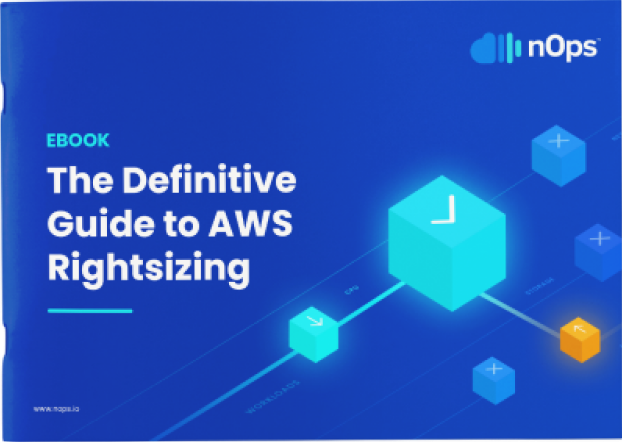
By following these steps, you can effectively detect and mitigate AWS cost anomalies, ensuring that you are optimizing your AWS usage and costs and avoiding unexpected billing shocks.
Best Practices For AWS Cost Optimization
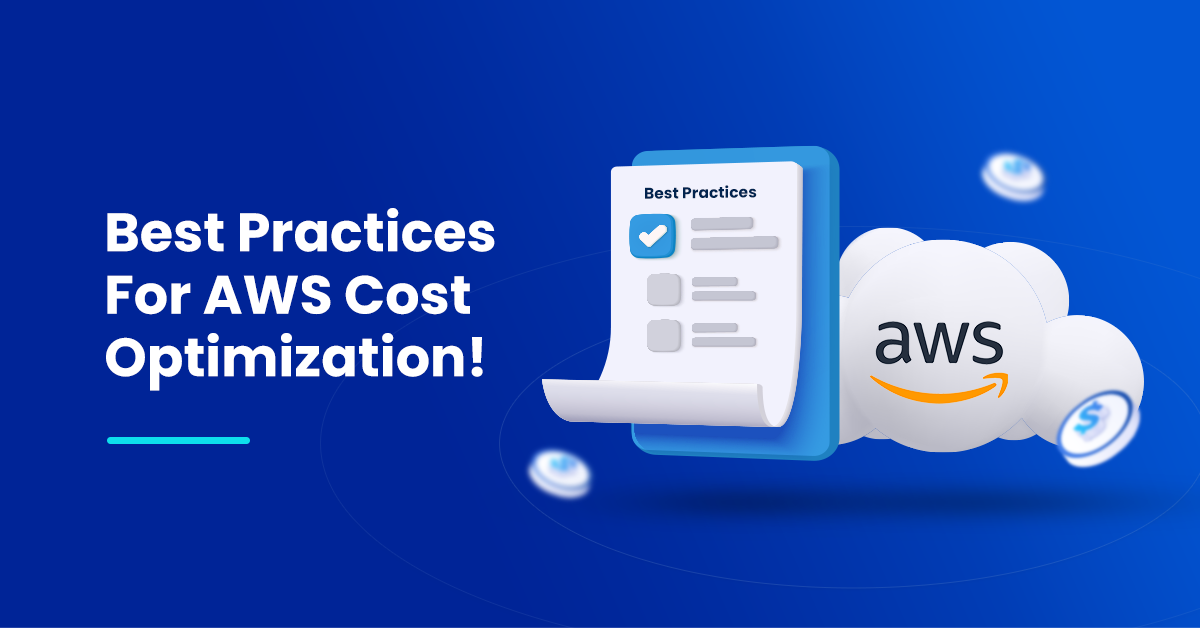
It all begins with having an infrastructure that complies with the best practices guidance of the Cost Optimization pillar of the AWS Well-Architected Framework. The AWS WAFR is about about architecting systems to achieve business outcomes at a minimal cost by applying best practices on deploying, scaling, managing, securing, and operating your cloud resources.
AWS cites four best practice areas for cost optimization in the cloud: expenditure awareness, cost-effective resources, matching supply and demand, and optimizing over time.
- Expenditure awareness: Innovation and fast-paced development/deployment are critical to business growth. How do you optimize cloud infrastructure costs without cratering cloud performance or your DevOps momentum? The first step in cost optimization is expenditure awareness. While the AWS Pricing Calculator lets you explore AWS services and create an estimate for the cost of your use cases on AWS, for proactive cost optimization you need to become better informed about your actual AWS costs. nOps will provide a real-time view of your AWS environment, with instant visibility to changes that affect cost.
- Cost-effective resources: How do you make sure your capacity matches but does not substantially exceed what you need? Your resources need to be monitored continuously for unused or underutilized resources so that you can take necessary action.
- nOps will identify unused “zombie” instances (that add cost but no value), gain visibility into CPU utilization patterns (to help you retire and re-engineer servers), and find unused Elastic IPs, unattached Amazon Elastic Block Store (Amazon EBS), and AWS Elastic Load Balancing (AWS ELB) with no instance running that can add cost quickly.
- By rightsizing your workloads, you can avoid wasting spend on unused or underutilized resources. nOps shows CPU utilization patterns to help you rightsize your instances and resources so that they meet your workload performance and capacity requirements at the lowest possible cost.
- On-Demand for applications with short-term workloads that spike periodically or unpredictable workloads that can’t be interrupted.
- Amazon EC2 Spot Instances for use cases such as batch processing, scientific research, image or video processing, financial analysis, and testing.
- Amazon EC2 Reserved Instances (RIs) for applications that have steady-state or predictable usage. nOps provides actionable insights for Reserved Instances (RI) planning that can save you money.
- EC2 Fleet to automatically launch the lowest-priced combination of resources to meet a defined capacity.
- Matching supply and demand: The supply of AWS services needs to match the demand for those services at the time they’re needed, to avoid wasteful overprovisioning. If your demand is variable, use a demand-based approach (AWS Auto Scaling or AWS ELB). For workloads with a significant write load that don’t need immediate processing, use a buffer-based approach (Amazon Simple Queue System or Amazon Kinesis). Use a time-based approach for demand that is predictable or well-defined by time (AWS Auto Scaling, AWS APIs, or AWS CloudFormation).
- Optimizing over time: Measure and monitor your users and applications to perform a gap analysis comparing your system utilization to your requirements. Establish goals and metrics that your company can use to measure its progress. The measures should focus not only on cost but also on the business output of your systems. AWS Cost Explorer and nOps are two tools that can help monitor infrastructure changes and identify spending trends.
- AWS Cost Explorer is a free tool from AWS that you can use to view charts of your costs. You see patterns in how much you spend on AWS resources over time, identify areas that need further inquiry, and see trends that you can use to understand your costs.
- nOps extends AWS Cost Explorer to provide billing anomaly detection and notification to eliminate surprises in your AWS invoices with machine learning-based detection and real-time alerts.
Cost optimization needs to be a continuous process
As you may have discovered, cost optimization is not a “one and done” process — your new projects and workloads will add cloud resources, which can drive increased AWS costs due to overprovisioning. It’s challenging to monitor costs manually on a continuous basis. nOps monitors infrastructure changes continuously to optimize resource utilization and cost so that you can eliminate surprises in your AWS invoices.
nOps helps you to track every single change that occurs across your AWS workload and provides insight on who made what change and when the change was made.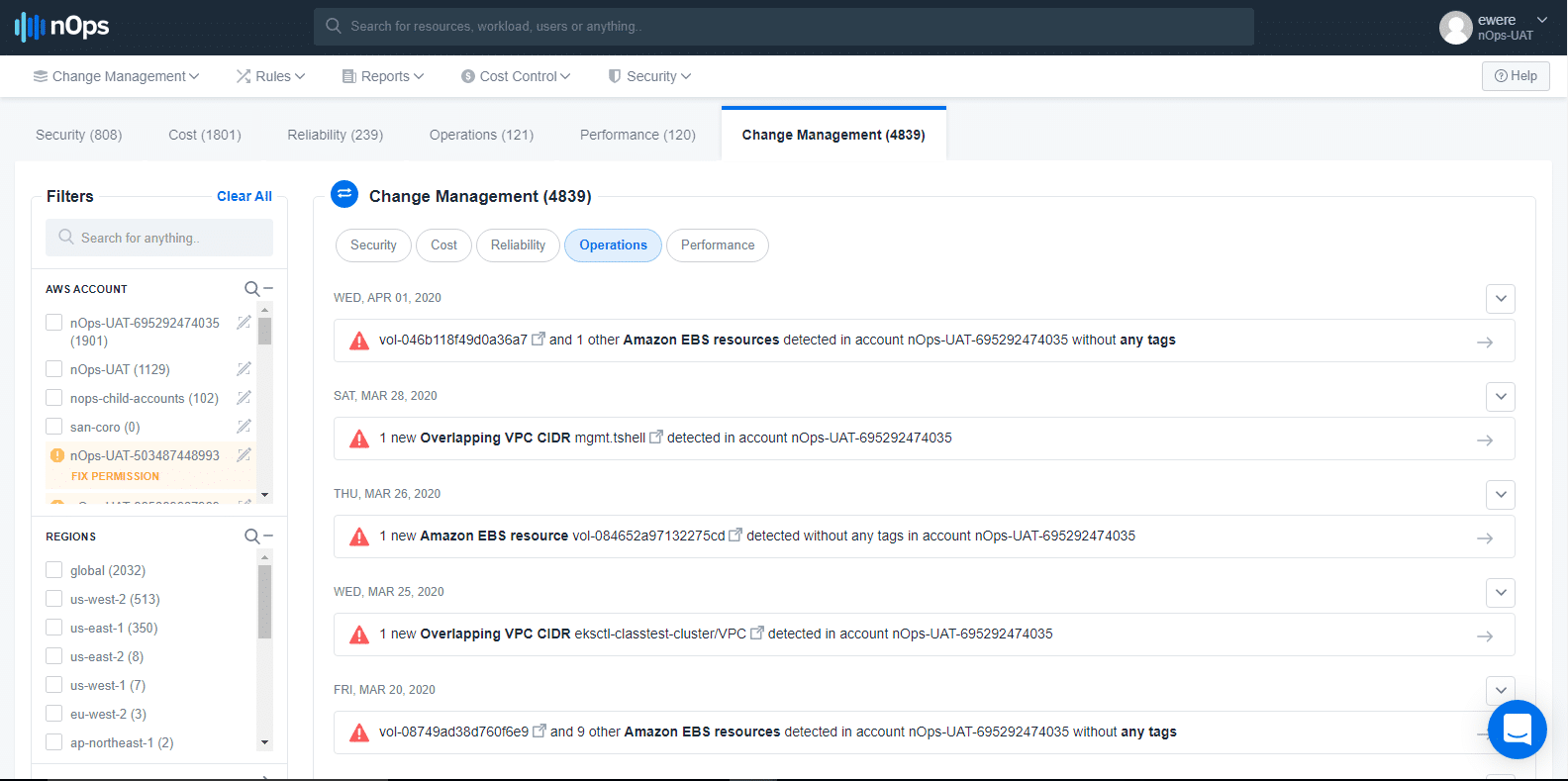
The nOps Cost Control Dashboard red-flags cost increases caused by infrastructure changes to workloads on your AWS account.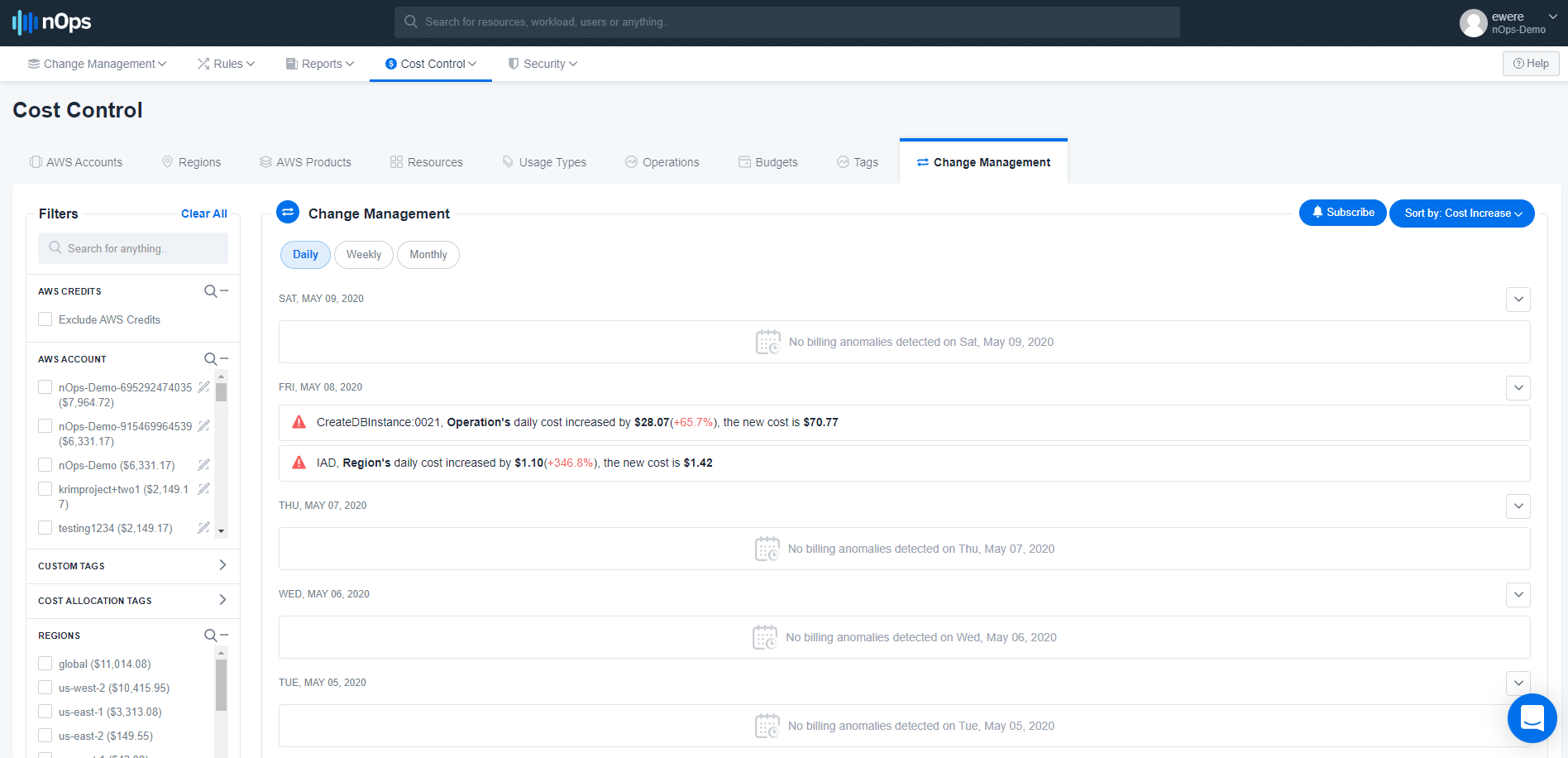
You can customize your preferences for nOps warnings and alerts.
- Tag keys.
- Who to notify.
- Frequency of notifications.
- How to send notifications (via Slack or email).
- Forecast billing alarms (when the forecasted bill exceeds a particular set benchmark).
- Budget alarms (when the bill exceeds the budgeted bill for that month).
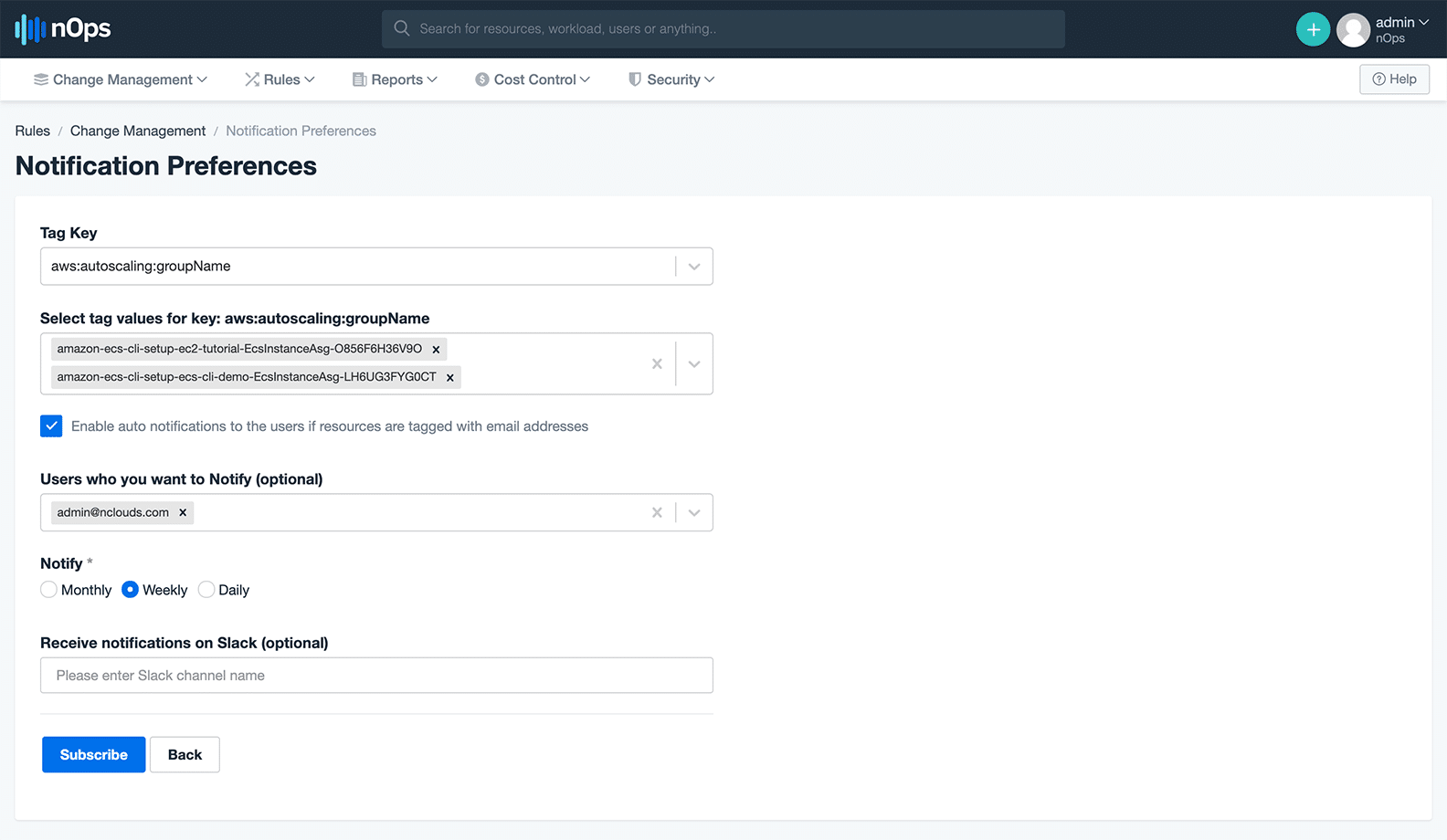
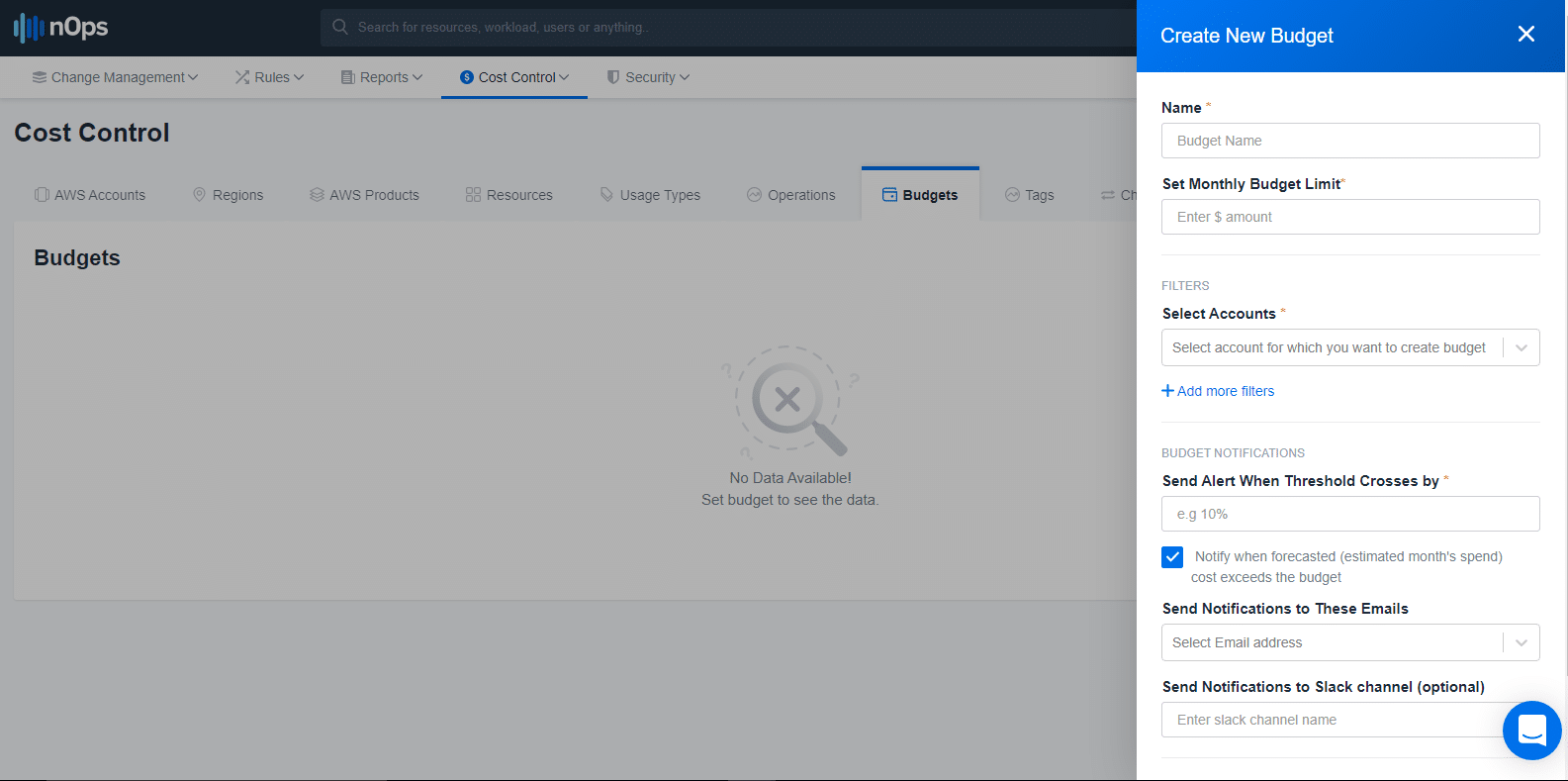
How Can nOps Help You With AWS Cloud Cost Optimization?
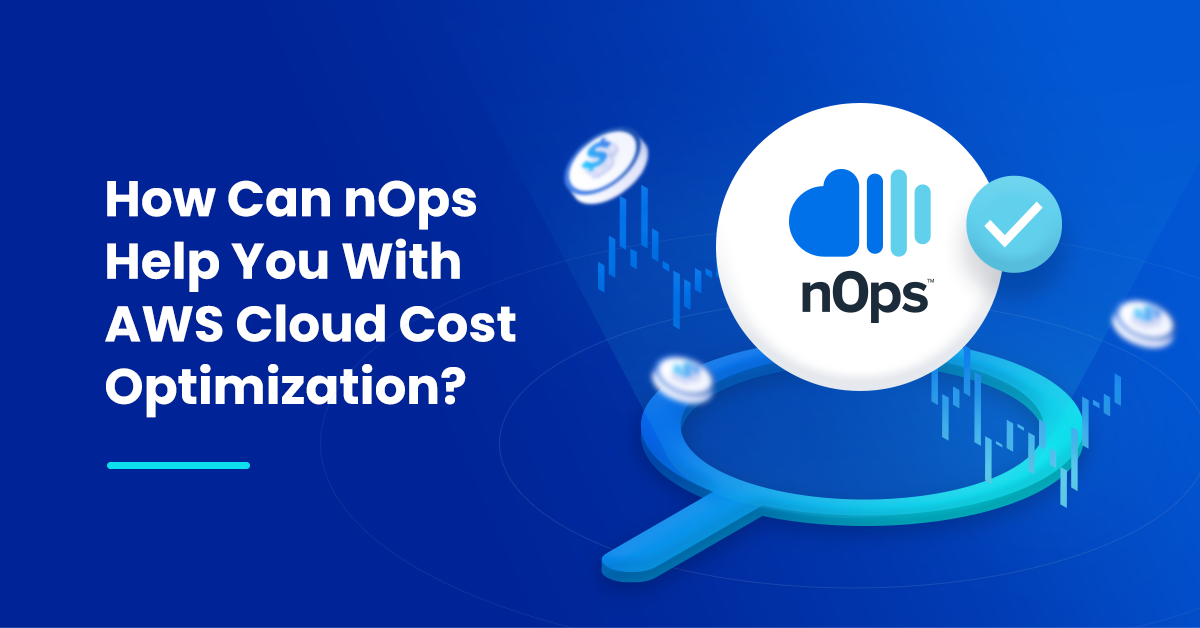
To optimize costs and avoid bill shock caused by anomalous spikes in AWS costs, your infrastructure must align with the best practices guidance of the Cost Optimization pillar of the AWS Well-Architected Framework. Cost optimization needs to be a continuous process, which is challenging to perform manually. You can automate this process and eliminate surprises in your AWS bill by using nOps cloud management to:
- Provide real-time visibility to changes that affect cost.
- Detect unused or underutilized resources.
- View CPU utilization patterns to help you rightsize your instances and resources.
- Deliver machine learning-based detection and real-time alerts.
To avoid billing surprises, nOps cloud management offers machine learning-powered detection that identifies costs outside typical parameters. The detection is carried out by AWS account, region, resource, and employee, and real-time alerts can be activated, allowing immediate action.
Your team focuses on innovation, while nOps runs optimization on auto-pilot to help you track, analyze, and optimize accordingly. Our customers can benefit in two key ways:
- First, pay less for what you use without the financial risk.
- Second, use less by automatically pausing idle resources.
Let us help you save! Sign up for nOps or Book a demo call today.
.png?width=1920&height=1080&name=Landscape%20(4).png)

